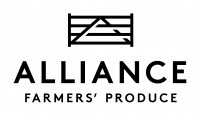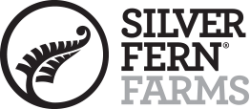Aug 16, 2021
The NZDFA Executive Committee sent a letter to the five venison marketing companies outlining our concerns around the venison schedule and requesting information on how each company resolved to restore venison production to profitability.
Click here to view the letter sent by the NZDFA >>
Click on the headers below to view the responses from the companies along with a letter from DINZ.
 10 August 2021
10 August 2021
John Somerville
Chairman
NZDFA Executive Committee
Email: johnandmelsomerville@gmail.com
Dear John
Thank you for writing to myself and the other processing company CEO’s expressing the concerns the DFA have with regards to the current performance of the Venison sector. Venison is an important part of Alliance’s portfolio, and we take the current performance of the market very seriously and share your concerns with respect to hind trends.
It is difficult to compare farm gate trends across species as there are so many variables unique to each. It is fair to say that the traditional bias of venison to food service certainly magnified the impact of Covid upon its performance when compared with lamb and beef. The historically more diverse international market enjoyed by lamb and beef also served them well. As Covid impacted markets it has certainly been easier to manage these products between different channels and markets than it has been for venison.
As part of Alliance’s ongoing commitment to Venison, not only have we in recent years invested in a new venison plant, we have also been investing to diversify our markets and channels. Although this work started prior to the challenges of Covid, given the timeline for benefits from such initiatives to be realised they unfortunately didn’t shield demand from the downturn experienced in traditional markets.
On a positive note, we are confident we are starting to see the rewards of our efforts. We are now seeing demand from both an increasingly diverse market and channel base. As inventory across extended supply chains gradually return to more traditional (and desirable) levels, it is hoped, combined with the improved market diversity this will manifest itself in improved market prices and in turn farm-gate returns.
From a pricing perspective we currently have a Minimum Price Contract in the field, the aim of which is to give suppliers surety of pricing. You can be assured the prices tabled are truly reflective of where we believe the market is / will be. Being a Minimum Price, the contract guarantees the minimum price suppliers will receive, but still allows them to realise further upside if the schedule was to improve beyond the price we are currently forecasting.
In the long-term Alliance remains confident in venison, the investments made in plants and developing market diversity in our view will create a stronger more resilient industry.
The Alliance team is very willing to meet and talk further on the issues our industry collectively faces.
Regards
David Surveyor
CHIEF EXECUTIVE
Click here to view the PDF version of the Alliance response >>
 Hello John
Hello John
Thank you for the attached letter, outlining the DFA’s views, and the opportunity to respond.
As a specialist venison processor/marketer I can assure you “Duncan” share the DFA’s concerns regarding the current low farm gate returns to deer farming.
If deer numbers drop, venison processing and marketing is threatened.
So we are very aware that venison schedules over time need to be significantly better than lamb or beef schedules for deer to justify their place on farm.
I’d be surprised if the companies that are in sheep and beef are not also concerned about venison.
Following are some specific comments I’d offer which I hope are helpful.
- You’ve acknowledged the role the companies played in continuing to process stock 12 months ago despite Covid shutting down the world’s restaurants and therefore global venison markets.
A big factor enabling companies to continue processing was the government’s designation of meat processing and marketing as an “essential service”, as well as the offer of financial assistance programs.
What’s important to understand is that a huge percentage of the 2020 venison kill, that was enabled by these measures, effectively went straight into cold storage.
Moving that 2020 product through to consumption, in addition to the current years 2021 production, is not an over-night job.
- The multispecies companies are more qualified to comment, but my understanding is that as significant volumes of sheep meat and beef are sold at retail, those retail items benefitted from the Covid induced surge in retail spending, so it’s hardly surprising that market demand for lamb and beef is much greater than venison demand at present.
- I’d caution against drawing conclusions about the current farm gate prices, or in market prices for venison, by just examining export tonnages, as there are many other drivers of the current market prices.
- I would agree entirely that another large hind kill, such as we saw in the early 2000’s, would be hugely concerning for the entire deer sector, especially the processing and marketing companies.
- You letter suggests that there needs to be a “re-think” and “reappraisal” of the various venison markets. I think that point would benefit from some discussion, to gain an understanding of the various venison markets.
- On the point of farmer sentiment, we’d agree absolutely that there is a very high level of concern around the current venison returns. What we also see, is a very wide range of attitudes to these low prices. Whilst some are seriously contemplating exiting the industry, there are others who see the current low prices as an excellent opportunity to expand, based on their faith in the longer term venison outlook.
- Your plea for better co-operation is another subject that would benefit from further dialogue, so that a clear understanding can be gained of both the benefits and the limitations of the red meat industry’s multi- company structure.
- Not referenced in your letter, but one of the single biggest factors weighing on farm gate returns currently is the global shipping disruption.
In summary, Duncan’s view is that the current season’s venison price of around $5.50 through the off season, to the over $7.00 level of the recently released base price contracts fully prices venison on today’s market levels.
However, we totally agree that these “tramlines” are not sustainable going forward beyond 2021, and in fact represent an industry that is only part way through the recovery process.
In market inventory from 2020, global shipping disruption, and a still pressured hospitality sector, are all reasons venison is not yet back to financially sustainable levels.
Our view is that venison markets could ultimately end up stronger than they were pre-covid, as the market diversification that Covid has forced on the industry will mean venison markets will be broader based than they were previously.
In closing, we’d be happy to join our fellow venison processor/ exporters in discussing the points you’ve raised in more detail for the benefit of all concerned.
Best Regards
Andrew Duncan
Executive Chairman Duncan New Zealand Ltd
Click here to view the PDF version of the Duncan response >>
 John Sommerville
John Sommerville
Executive Committee Chairman
NZ Deer Farmers Association
9th August 2021
Dear John,
We acknowledge your letter of 27th July detailing concerns over current Venison returns.
We are acutely aware of the impact of the past 16 months on all participants in the Venison value
chain. Despite almost 2 decades of investment in building retail and niche Venison business across a
range of countries, we were far from immune to the impact of every restaurant in the world closing
for an unheralded period of time.
Our approach throughout this crisis has been to facilitate regular and transparent communication
with our suppliers, as we have collectively navigated our way through a series of external shocks
none of us were prepared for.
With the aim of maintaining confidence during this time we released a minimum price contract in
April, for deer to be processed Aug to Oct. This was a gamble on our part that restaurants will be
open and shipping space will be available to get the product to market, but we recognised that
something needed to be done to instil confidence.
In reference to your comments relating to comparative livestock returns. Yes, sheep and beef have
benefitted from a number of macro factors which Venison does not have in its favour. Buoyed by a
COVID-led explosion in eating at home, both beef and sheepmeat have benefitted from being
produced and consumed globally and predominantly sold through retail channels. In comparison,
high value cuts of Venison have been designed for fine dining restaurants in Europe and the USA,
which have struggled to open and operate. This was particularly harmful when restaurants were
shut during the peak consumption period of Sept 2020 to March 2021. Another factor has been
China, where New Zealand sheep and beef exports are at record highs. While a lot of investment is
going into growing the Chinese consumers’ interest in Venison, today China remains a relatively
small market for New Zealand Venison.
At First Light we have invested heavily during the past year in our US and New Zealand Venison retail
business, as consumers used their new found time to experiment with new products in the kitchen.
It has been pleasing to see Venison retail sales continue to grow, indicating the Venison consumers
we recruited over the past 12 months now have Venison in their portfolio. We have also invested in
growing our on-line sales, where again, demand is holding strong at new levels. While we wish we
could move faster, unfortunately there is no shortcut to the process of educating and recruiting
Venison consumers to these channels, but we are committed to continue to invest our time and
money for the future benefit of the product, our company and the industry.
Looking to the immediate future, we expect to have to deal with aftershocks from COVID being the
Delta variant and compromised global logistics. However, restaurants in our main markets are
steadily reopening and our niche markets are recovering so we are starting to see the release of a
year of pent up demand.
Should we maintain the current trajectory we expect to see supply chain inventories depleted and
strong forward demand by year end which should lead to normalised venison returns. Our next
milestone is November and as we have done before, we will readily share the new price signals with
our suppliers at that time.
Best Regards
Gerard Hickey
Managing Director
First Light Venison
Click here to view the PDF version of the Firstlight response >>
 Hi John
Hi John
Regarding your letter – my thoughts are as follows:
We have confidence in the future for New Zealand farmed venison. The evidence over the years is that our product works in the specialty meat category. We have been developing niche markets for Mountain River Venison for many years. We have shared some of our programmes with the industry and with our community. Our programmes are showing overwhelmingly positive results.
Speaking to the overall price situation, the market for a large proportion of NZs venison production is seasonal - October to December. The market has had a few bad seasons. We entered the 2018 season with prices too high induced by the pet food bubble and made worse by warm weather in the autumn. That was followed in 2019 by low premium protein prices (apparently linked to demand from China for lower value cuts). Then came Covid in 2020.
A bad sales season, whether by misjudgement or bad luck, can't be recovered until the following one in an annual cycle. That is why venison prices have not bounced back quickly like other proteins. The venison market does not have the same dynamics as lamb or beef. Most deer farmers are aware of this. Sometimes we are happy about it, and sometimes not.
Currently prices are also impacted by weaknesses in transport infrastructure and high rates, particularly for airfreight.
I repeat, we believe the future is bright for NZ Venison to be positioned at the top end of the protein market. More focus in this direction is the strategy the industry needs to pursue. Courage and patience is required to see the vision realised.
Regards
John Sadler
Click here to view the PDF version of the Mountain River Venison response >>
 John Sommerville
John Sommerville
Chairman
New Zealand Deer Farmers Association
13 August 2021
Dear John
This letter is in response to the concerns you raised around the market conditions for New Zealand Venison.
Your letter correctly states the current challenges for Venison are the result of the reliance on a narrow set of food service channels, which expose the category to a high-level of risk when those channels are negatively impacted as they have been by Covid.
Within this context, Silver Fern Farms has been working hard on new market and channel diversification options. This work was underway prior to Covid hitting markets and has increased in pace due to the impact of Covid.
We recognise as New Zealand’s largest venison exporter Silver Fern Farms needs to reduce its reliance upon the European Food Service sector to create some optionality for the recovery of venison pricing and provide some resilience into the future.
The arrival of Covid certainly halted this progress and we found ourselves more focussed on being able to service our farmer clients’ needs to process stock, despite sales demand becoming non-existent.
While we are having some success in diversifying our markets, this strategy is a long-term investment that will take time to deliver positive results. Venison is not a well-recognised product in retail and in the Covid environment retailers have looked to narrow their product base, rather than launch new ones.
Despite this, we have managed to launch our Silver Fern Farms branded Venison brick which is now the number 1 selling Venison grocery item in the USA. In recent weeks we have expanded into another 240 stores nationwide and launched a new medallion product.
These successes have been reflected in recent increases in the Venison schedule.
If we are to break our traditional reliance on EU and US food service new markets and channels will be the key. We have been working hard in China to resurrect the interest that we were starting to create prior to Covid and believe we are seeing evidence of progress as we seek to educate chefs and consumers through workshops, demonstrations, food shows and on-the-ground research.
As we progress these two key markets, we also see options for our Venison products in retailer, E-Commerce, high-end petfood, as well as a restaurant presence, which we believe we can grow towards a more robust and profitable future, but it will take time and effort.
The initiatives we are working on gives us some optimism we can create new markets and channels to create value long-term.
As an industry, the challenge for us is acknowledging we need to move the dial, create a different future for Venison and not get complacent when the EU and US food service channels return, as we need that optionality and competitive tension to create longer term resilience.
Any new customers and new channels we develop to spread our market footprint will be unforgiving if we drop them overnight to return traditional channels.
Long-term sustainable returns for Venison farmers means Silver Fern Farms and its suppliers need to get the balance right between taking the best price today and investing in new relationships and channels to build resilience into Venison demand so it can remain solid across the inevitable cycles of the market.
Yours sincerely
Simon Limmer
Chief Executive
Dave Courtney
Chief Customer Officer
Click here to view the PDF version of the Silver Fern Farms response >>
 August 6, 2021
August 6, 2021
John Sommerville
Chair,
NZDFA Executive Committee
C/o NZ DFA PO Box 10702 Wellington
By email: johnandmelsomerville@gmail.com
Re: New Zealand Venison Markets
Dear John
Thank you for including members of the Deer Industry New Zealand Board and Executive in your correspondence with the CEOs of New Zealand venison processing and marketing companies.
Your letter was tabled at the meeting of the DINZ Board on July 28th. Given the timing of the letter the company representatives on the board had not had time to discuss your comments with their CEOs prior to the meeting. Nonetheless the DINZ Board attendees discussed the state of the venison markets in depth, as they do at each meeting, and discussed your concerns:
- The company representatives are acutely aware of the stress that venison breeders are under at this time and are talking with their suppliers about the prospects for the short to medium term ahead.
- The company representatives noted that they are passing through the return from the sale of venison at this point in time.
- The DINZ Board recommended an increase in the DINZ venison promotion budget for the year ahead, and to redirect funding toward company specific activities aimed to assist the chances of increasing the diversification of venison markets.
- The DINZ Board would like to reiterate that DINZ had increased venison funding this year, coordinated marketing companies are focusing additional resources on China and the US retail markets, and they remain open to opportunities to work collaboratively;
- But acknowledged that with the scale of the disruption to the international food service trade, and the carry-over of frozen venison from 2020 that a rebound in the venison schedule is unlikely to occur this year.
We will continue to provide assistance to marketing companies to increase returns for venison, and will continue to report transparently to industry information we gain from the market place as the venison sector recovers.
Yours sincerely,
Innes Moffat,
Chief Executive
Deer Industry New Zealand

